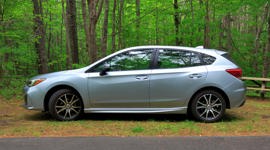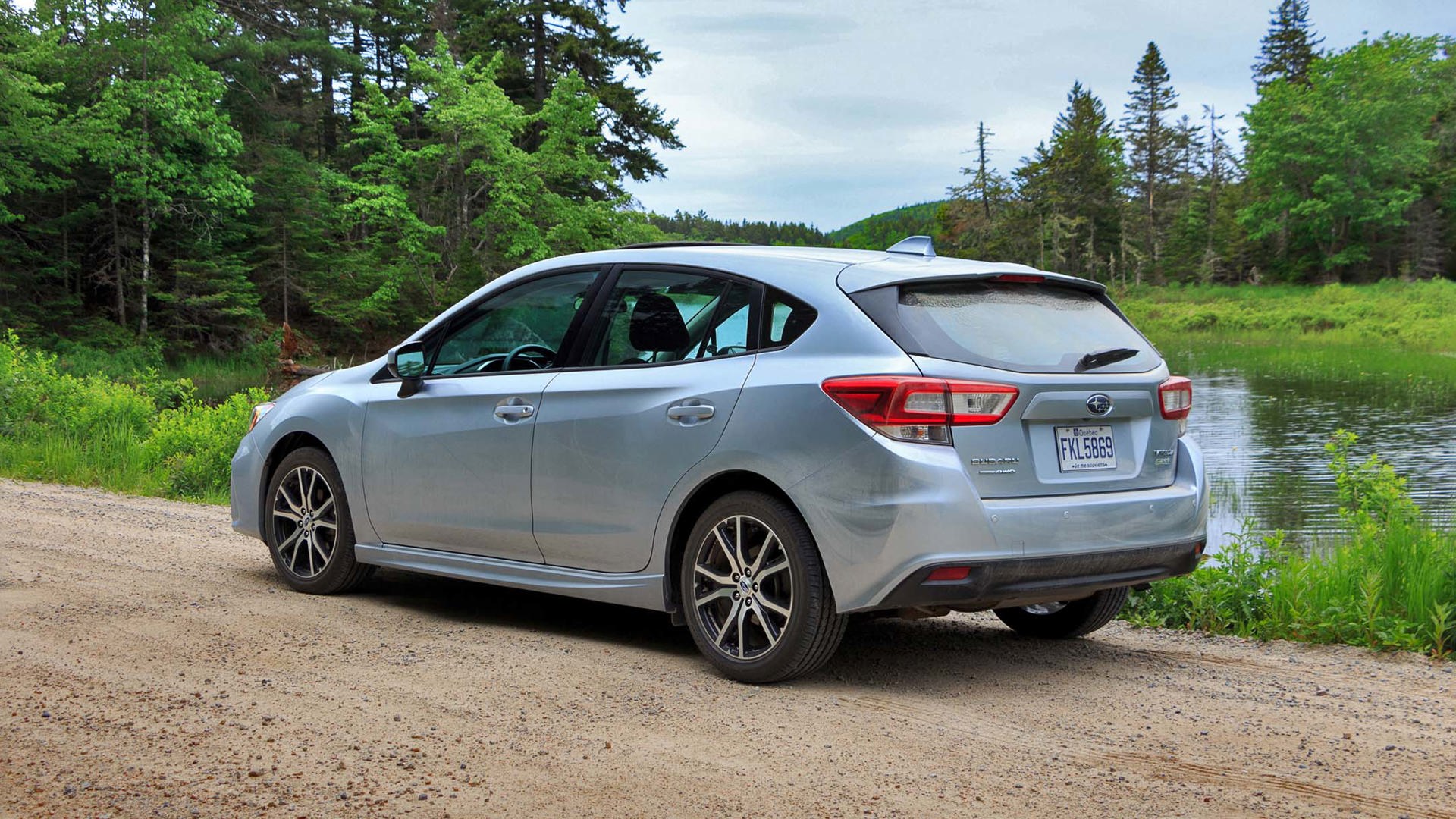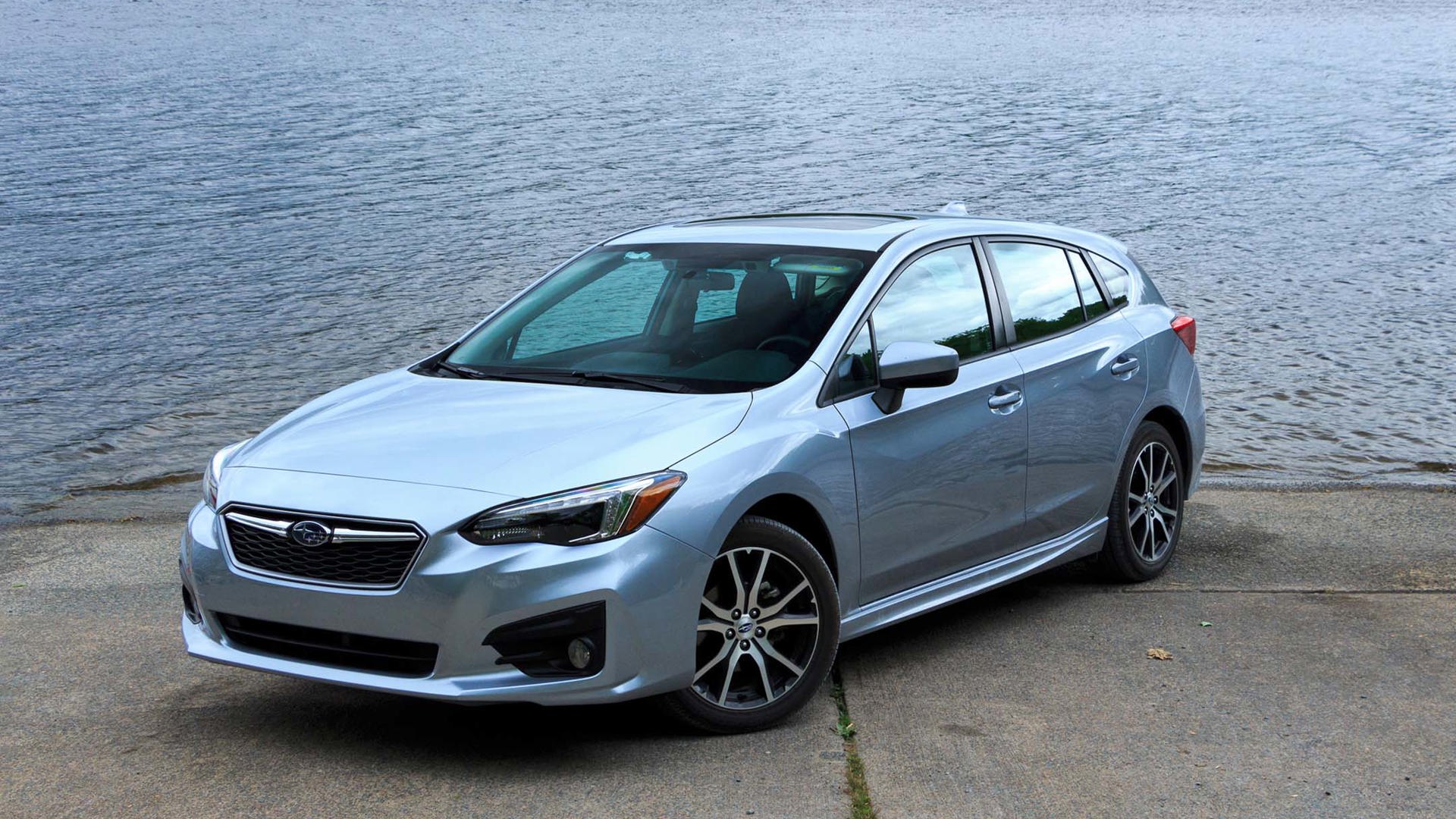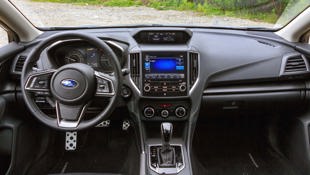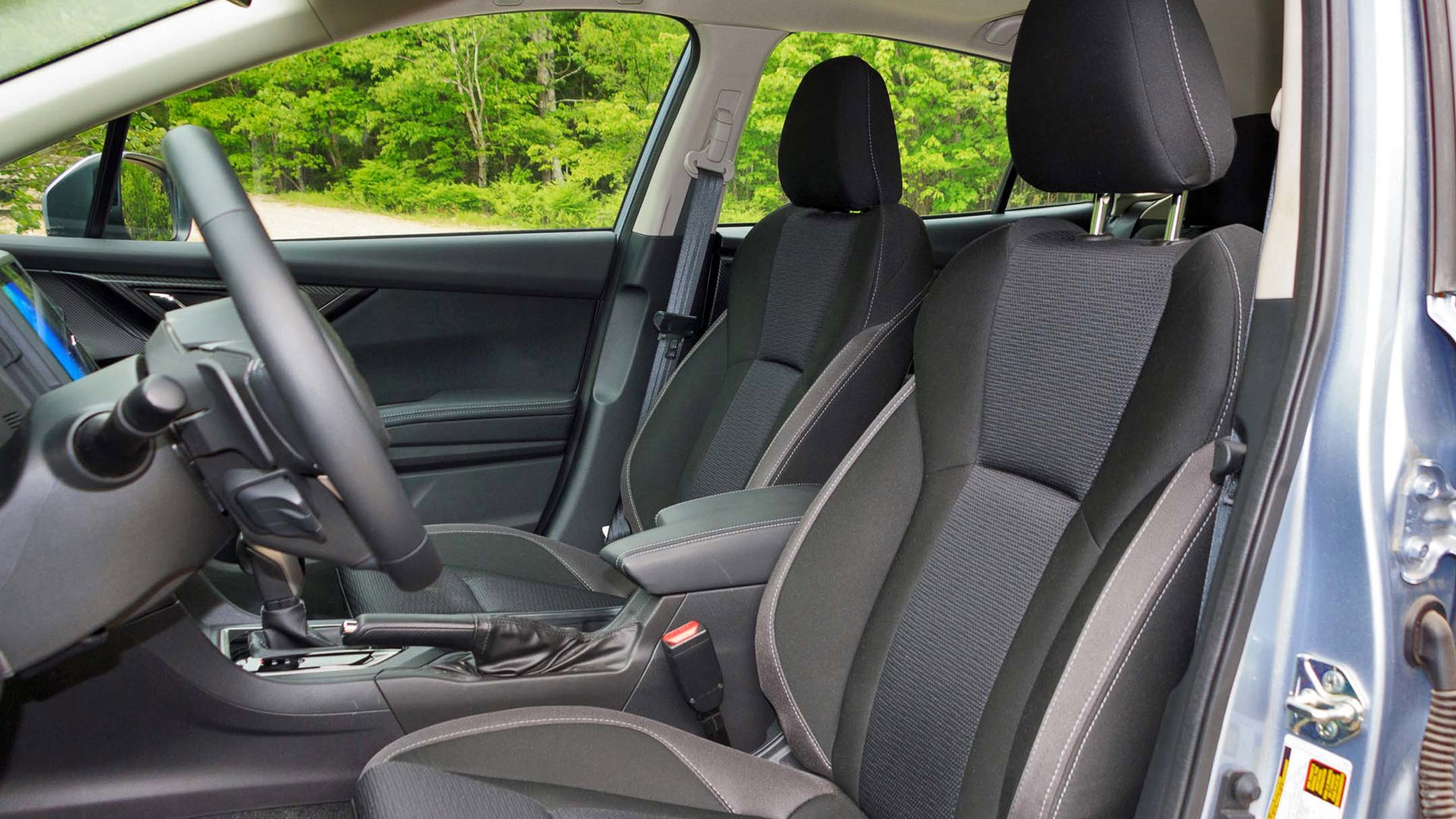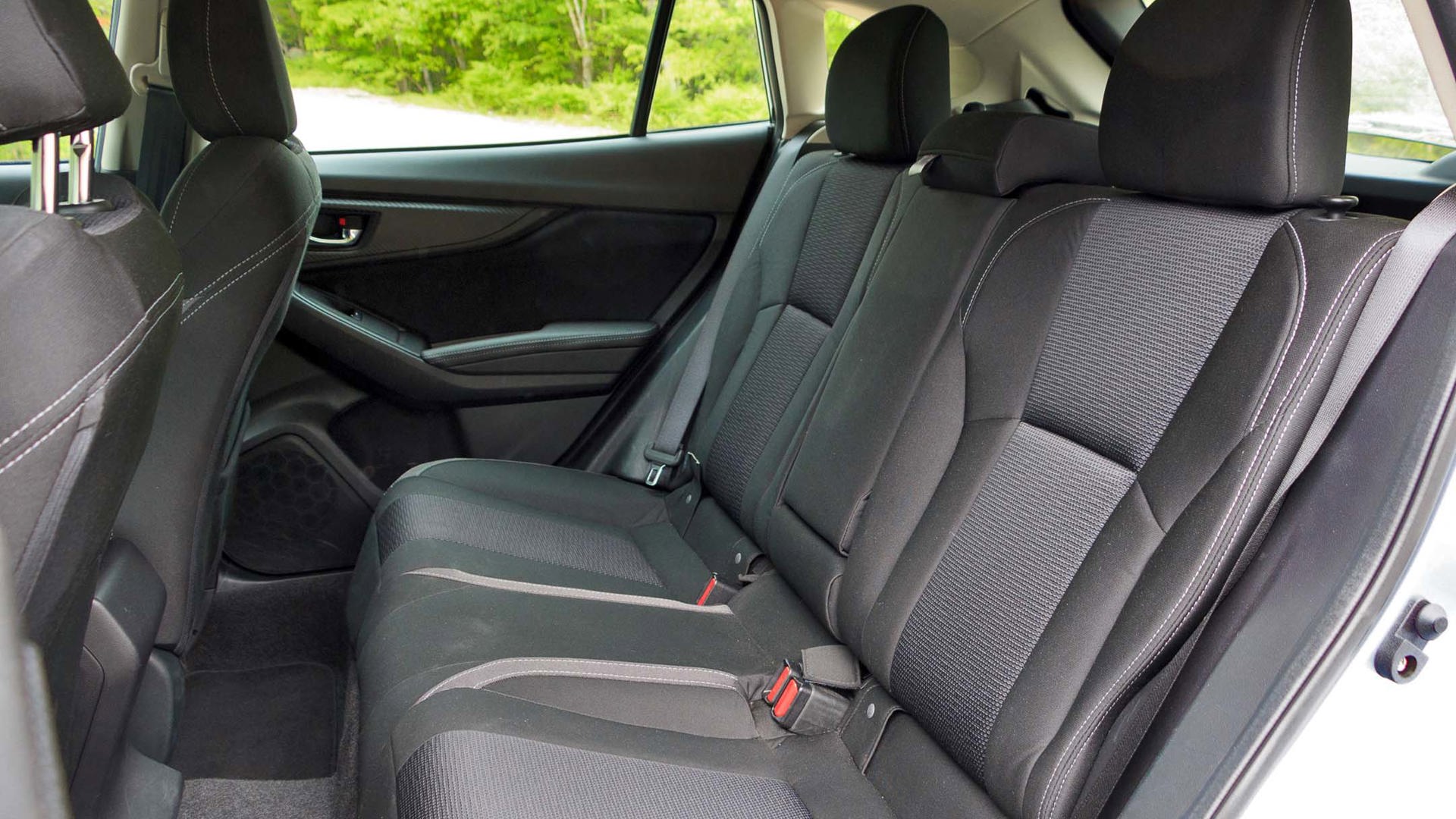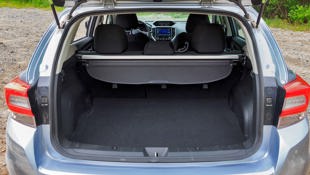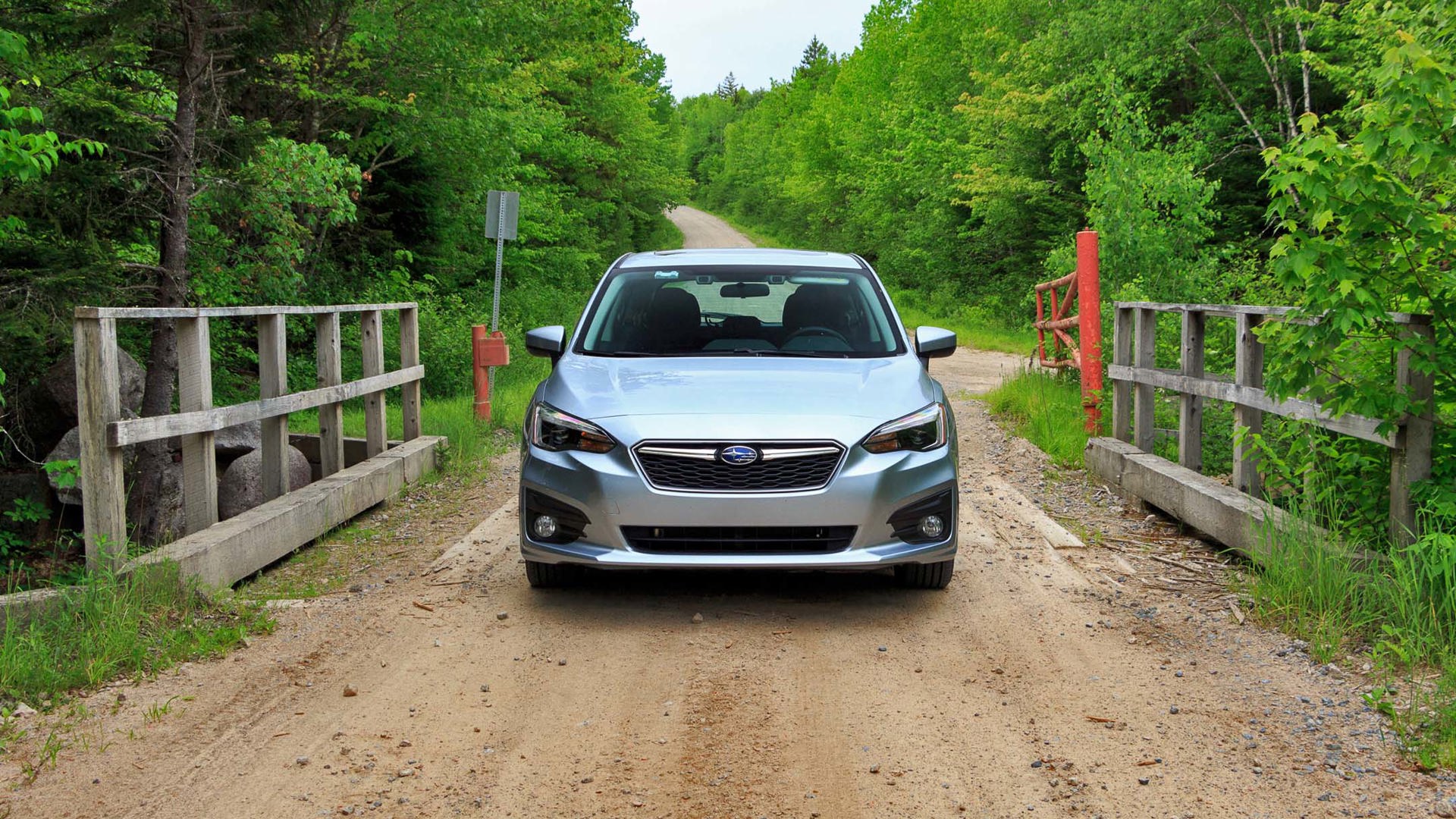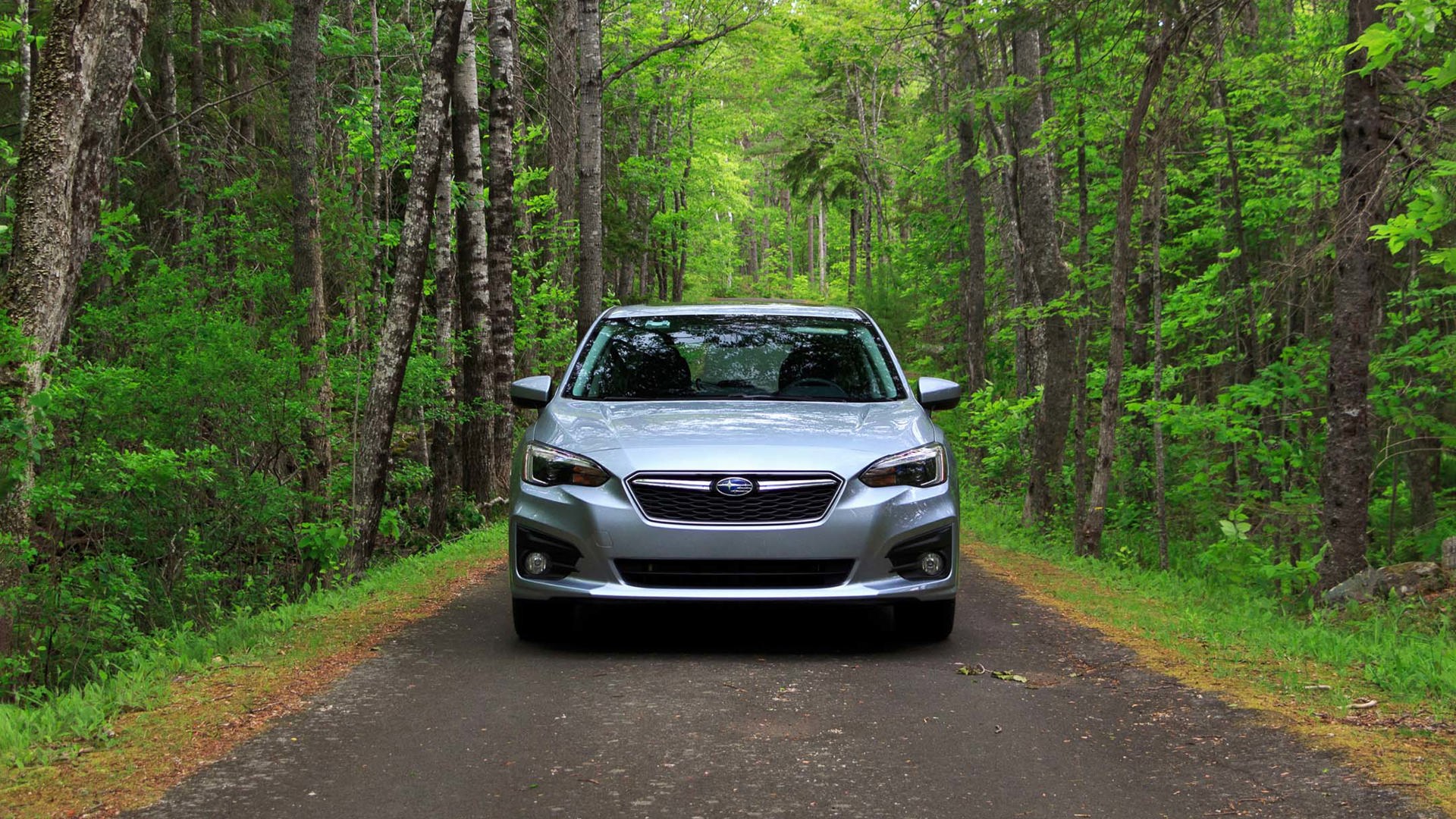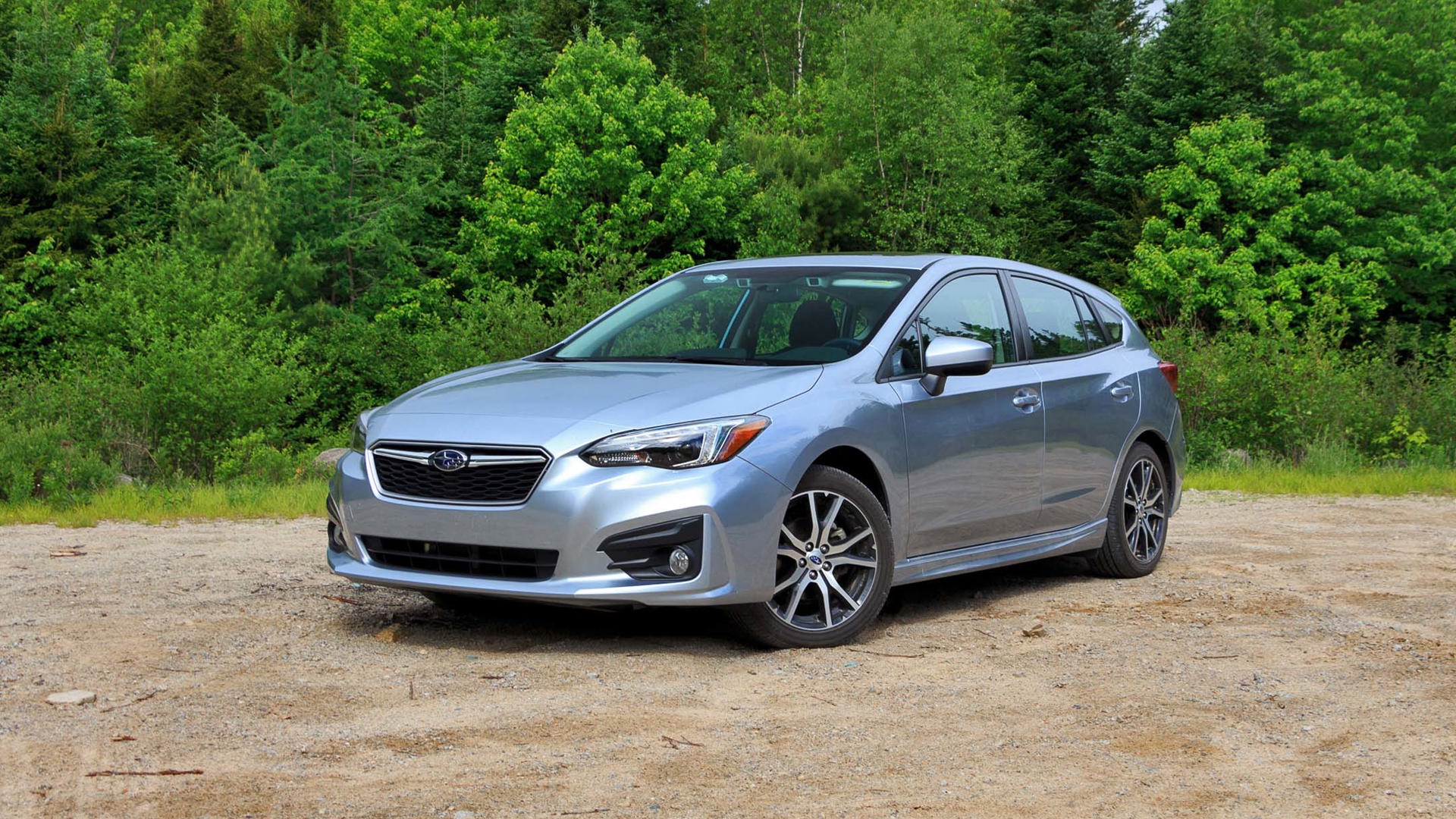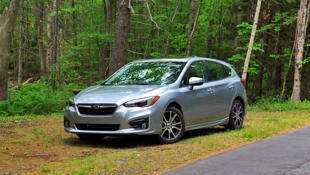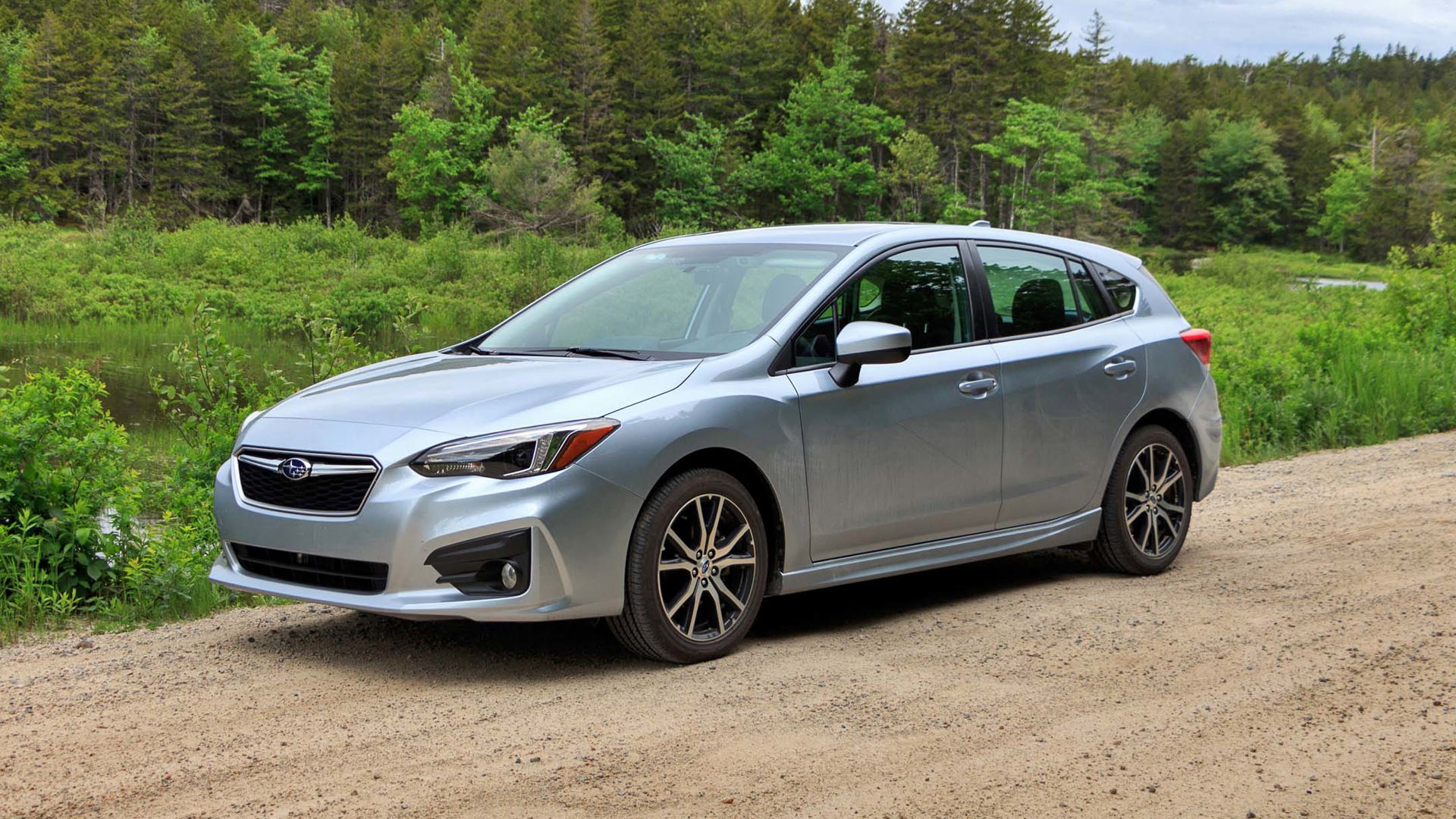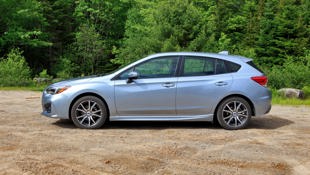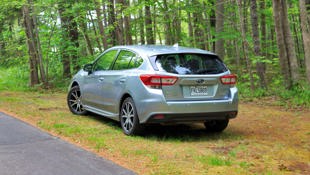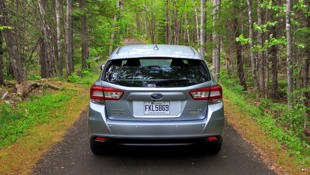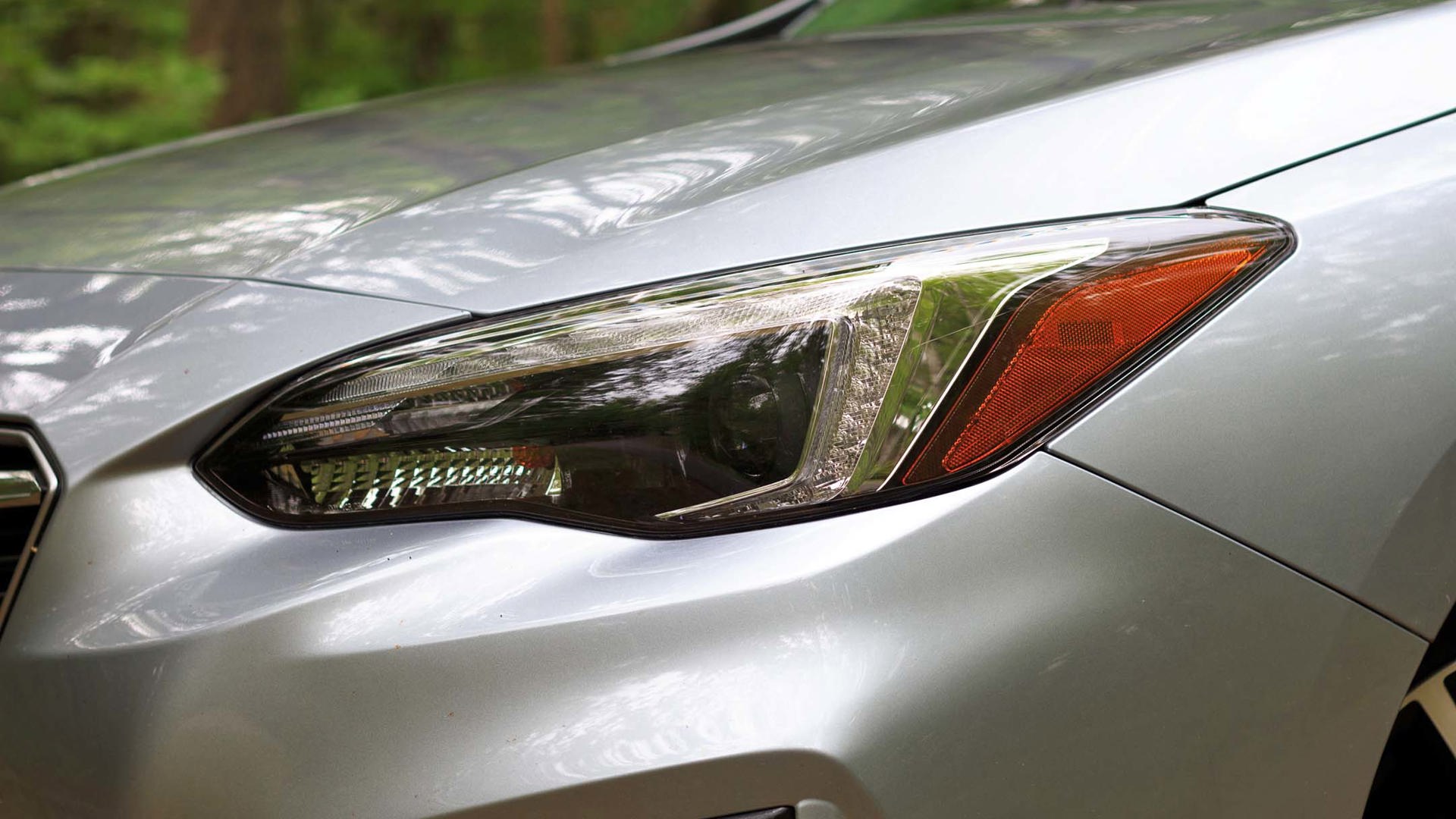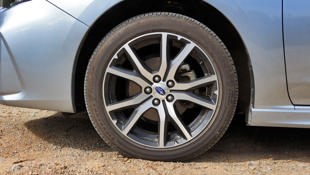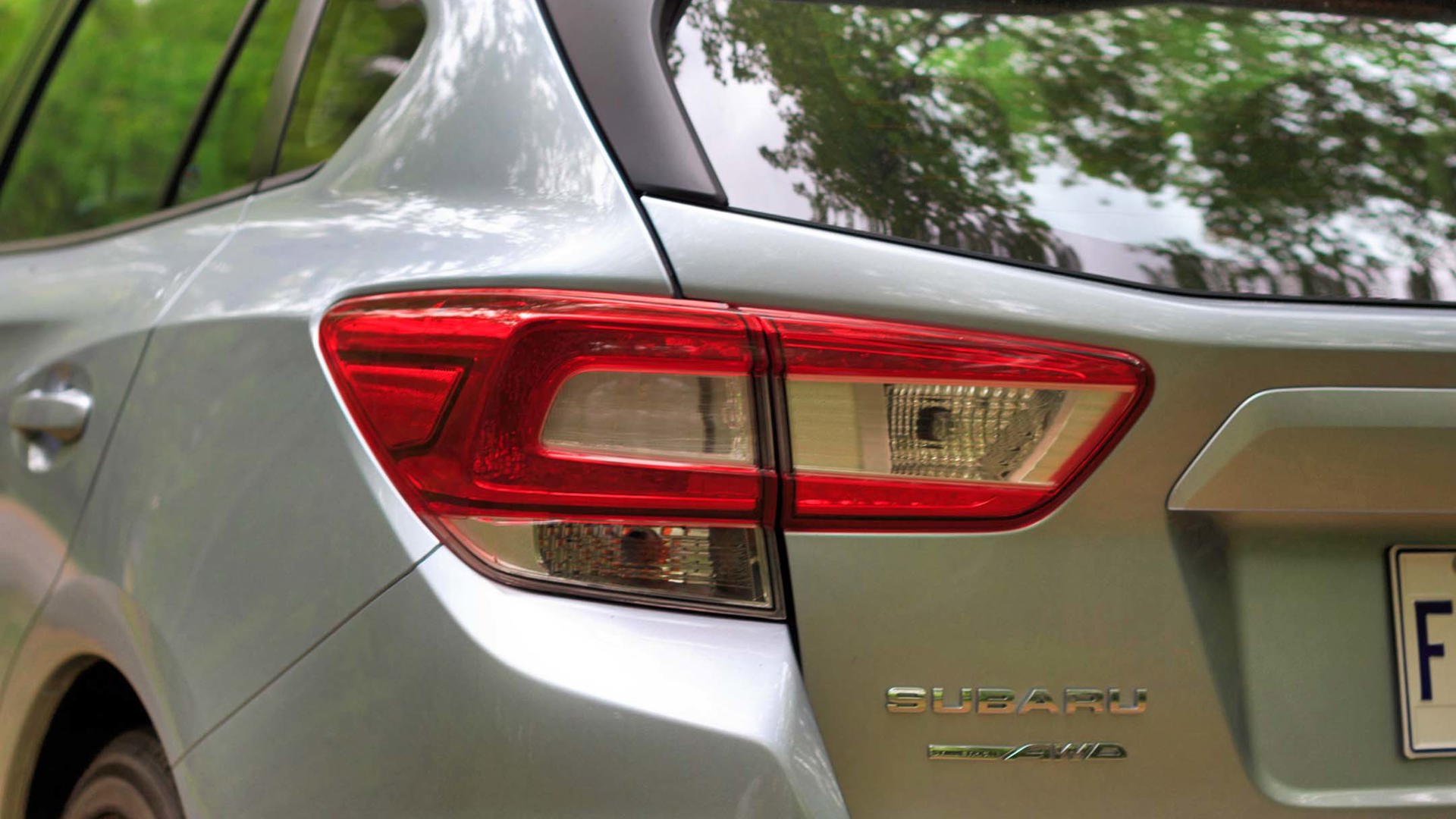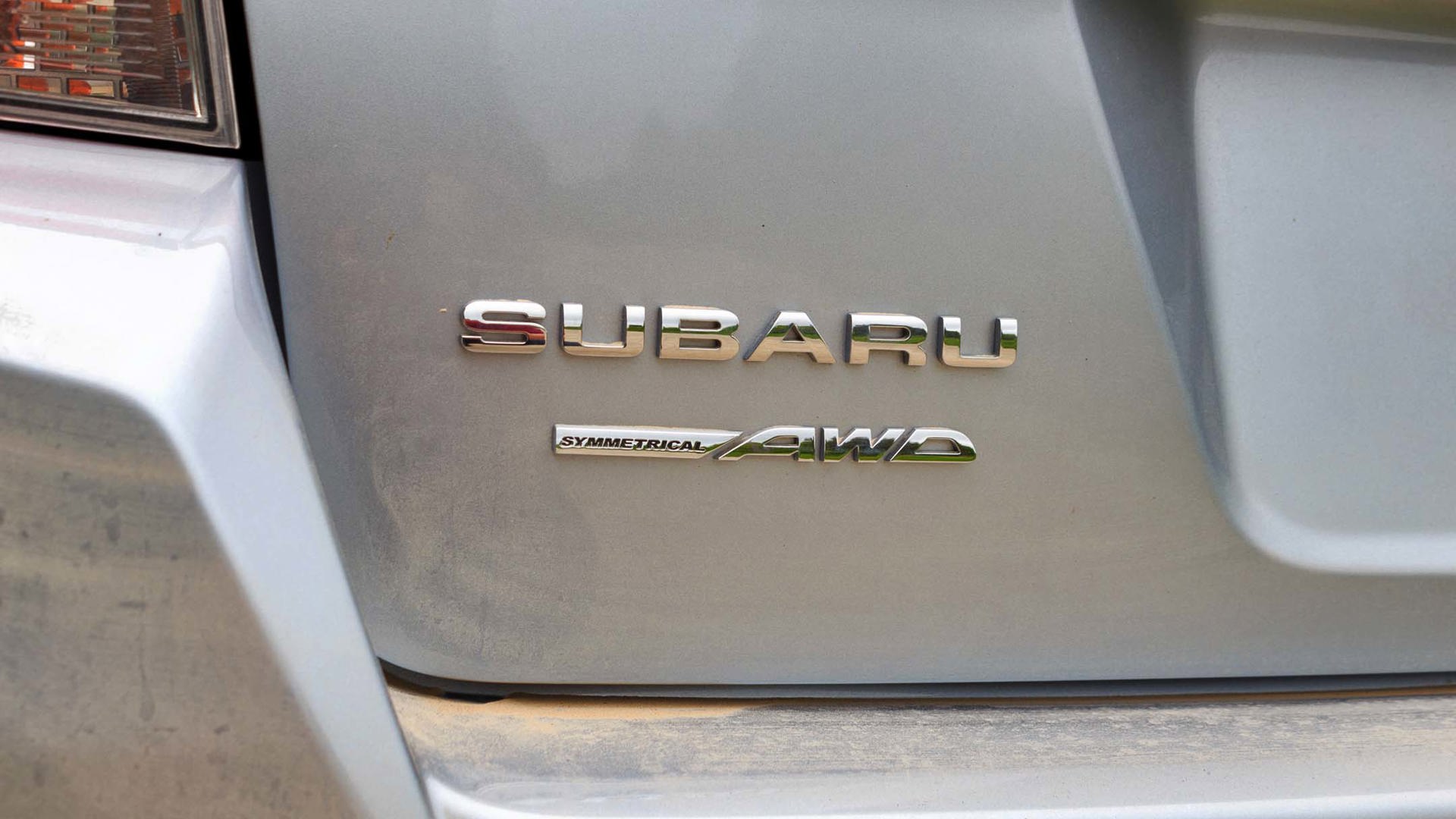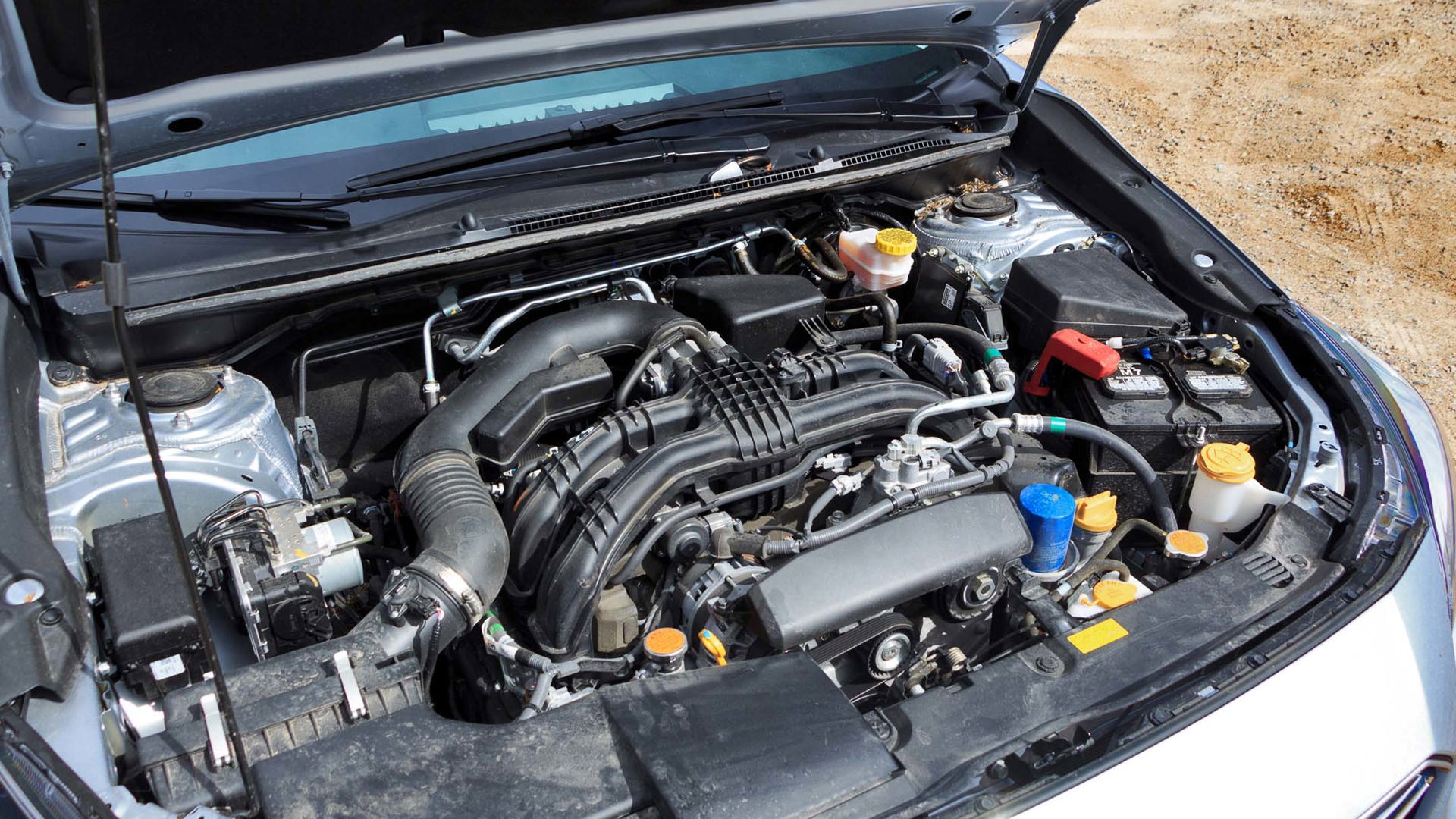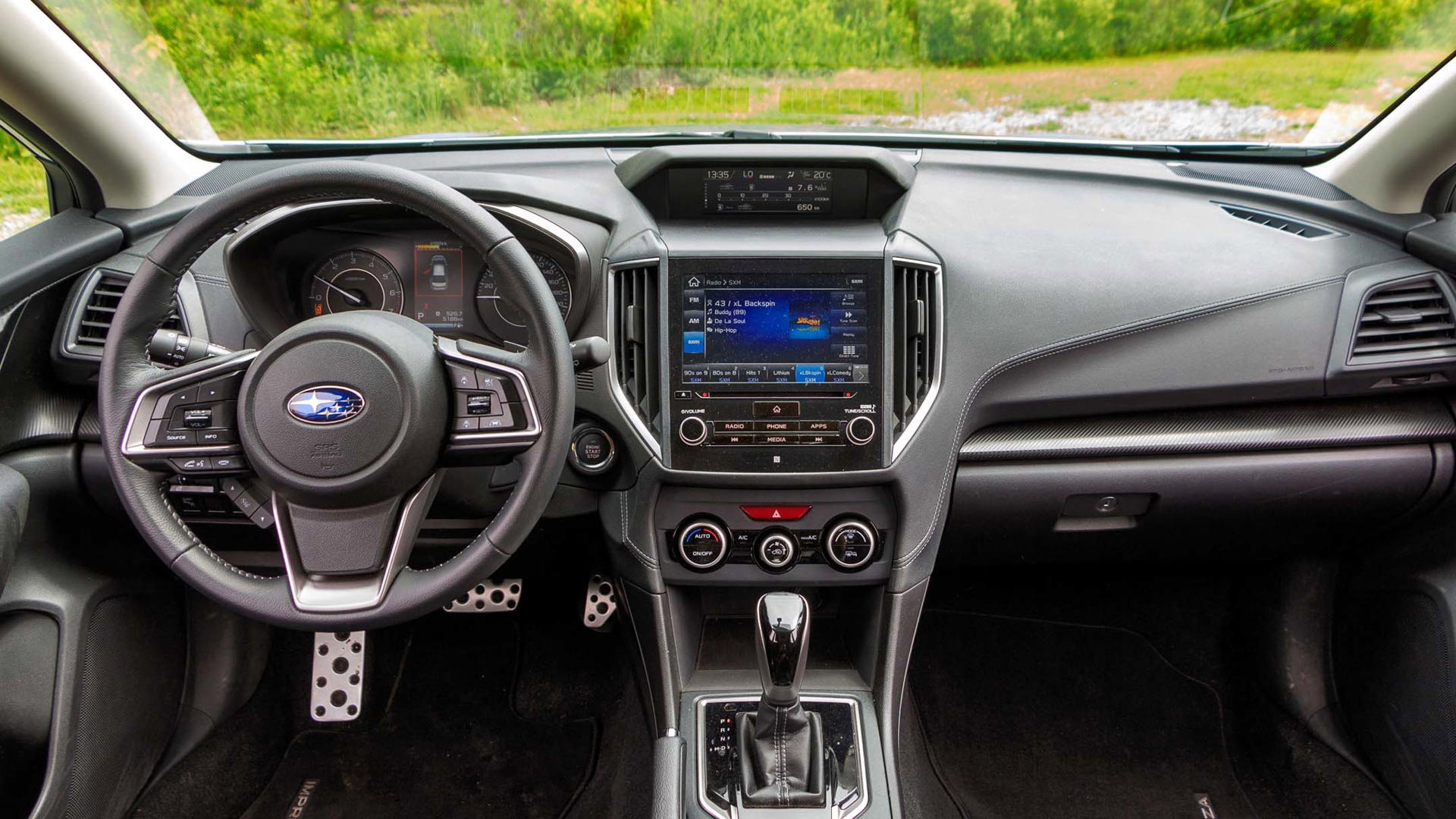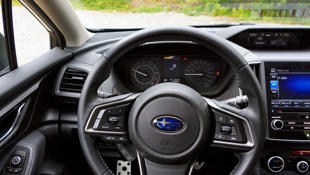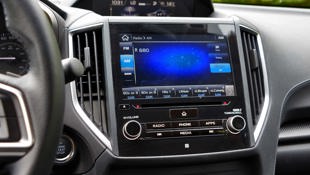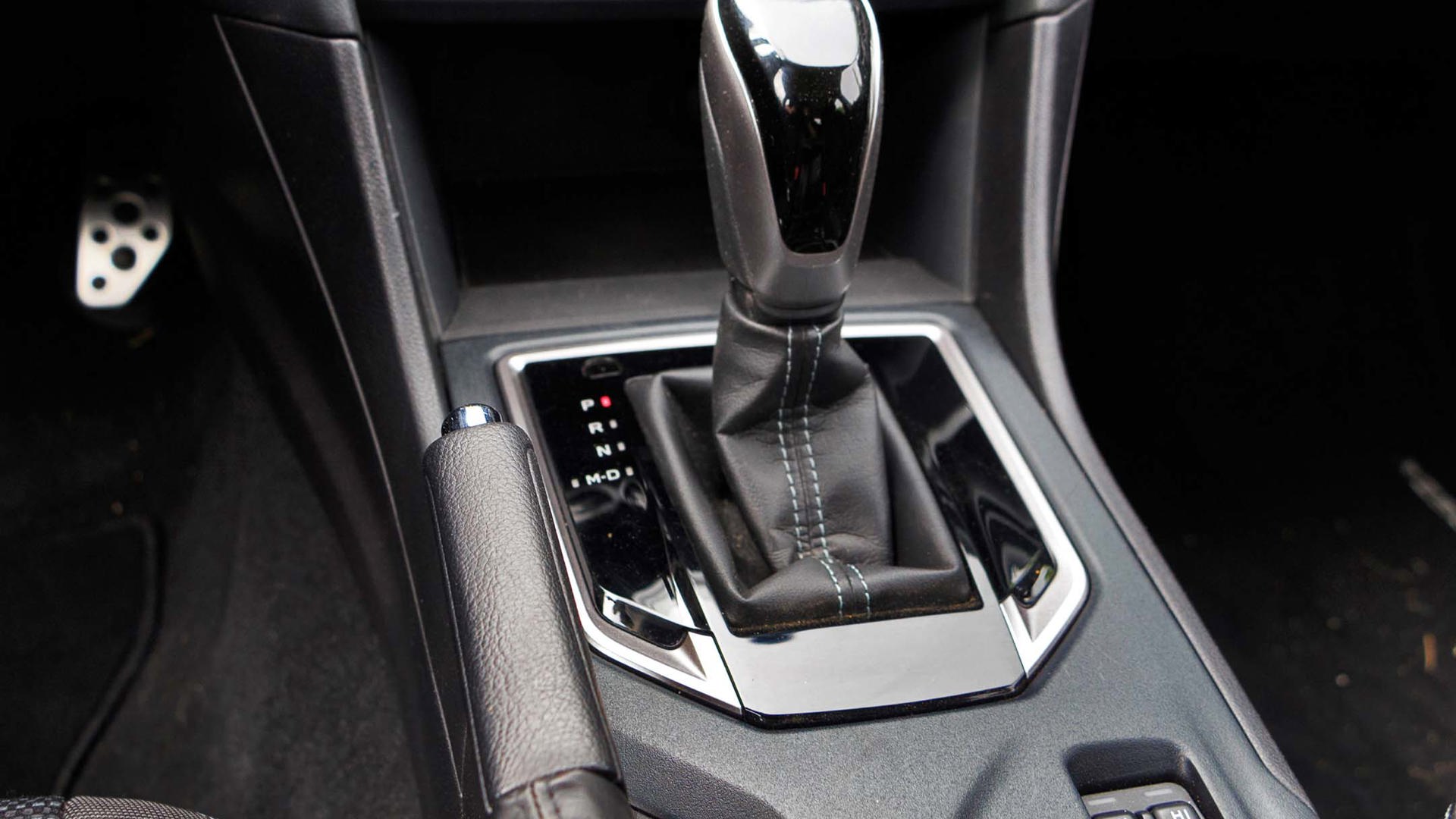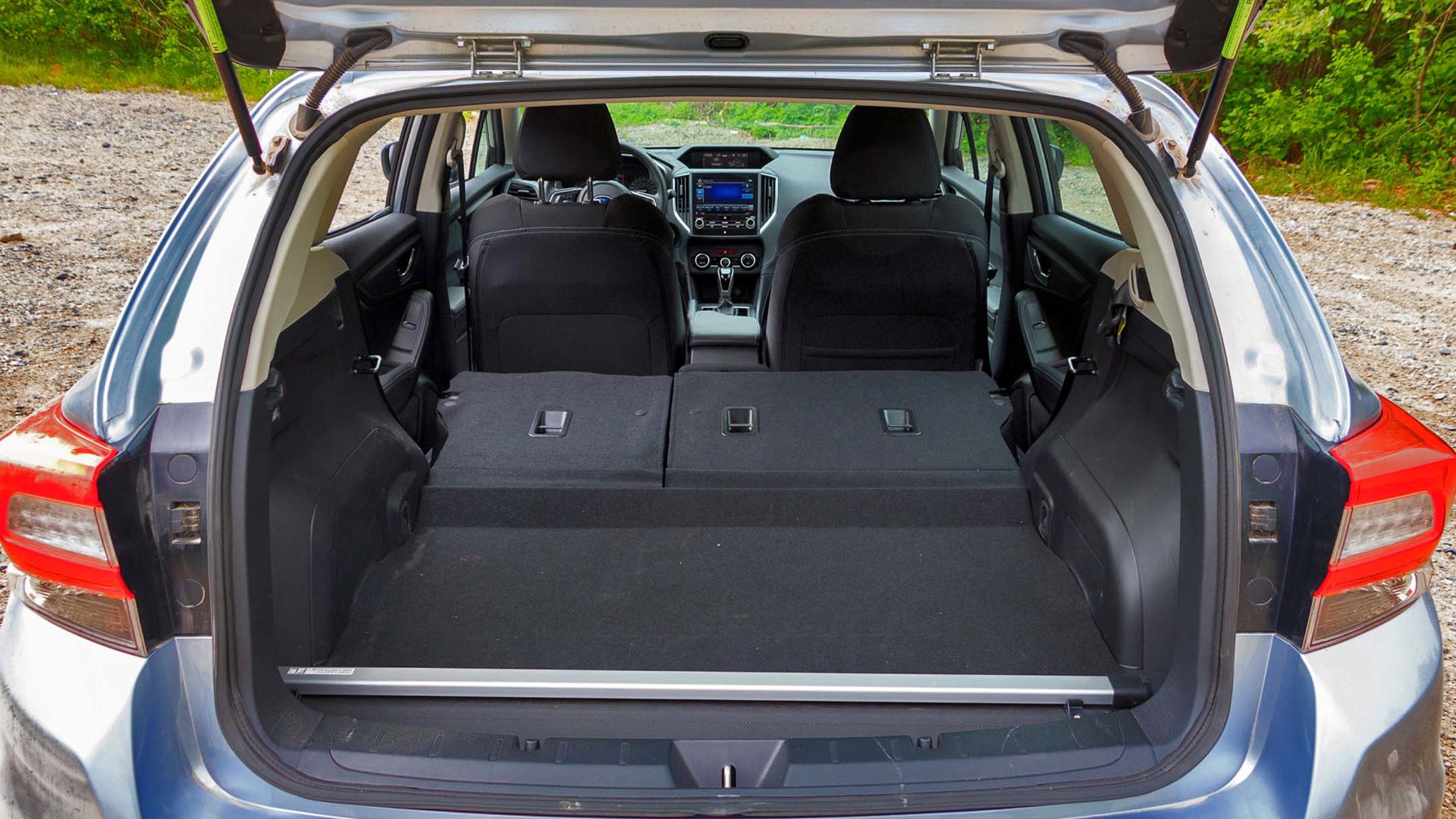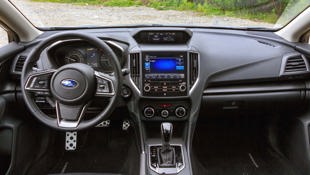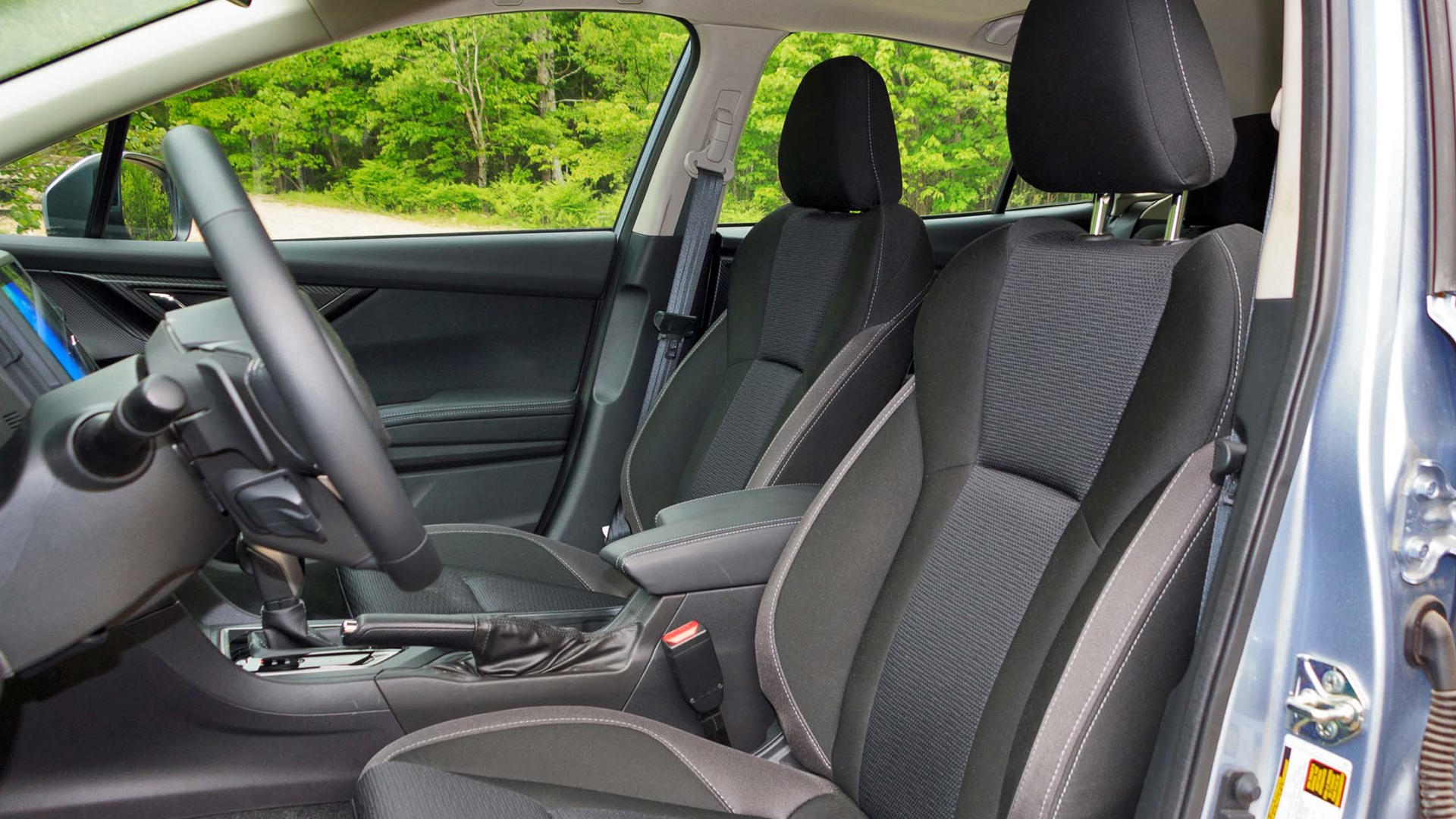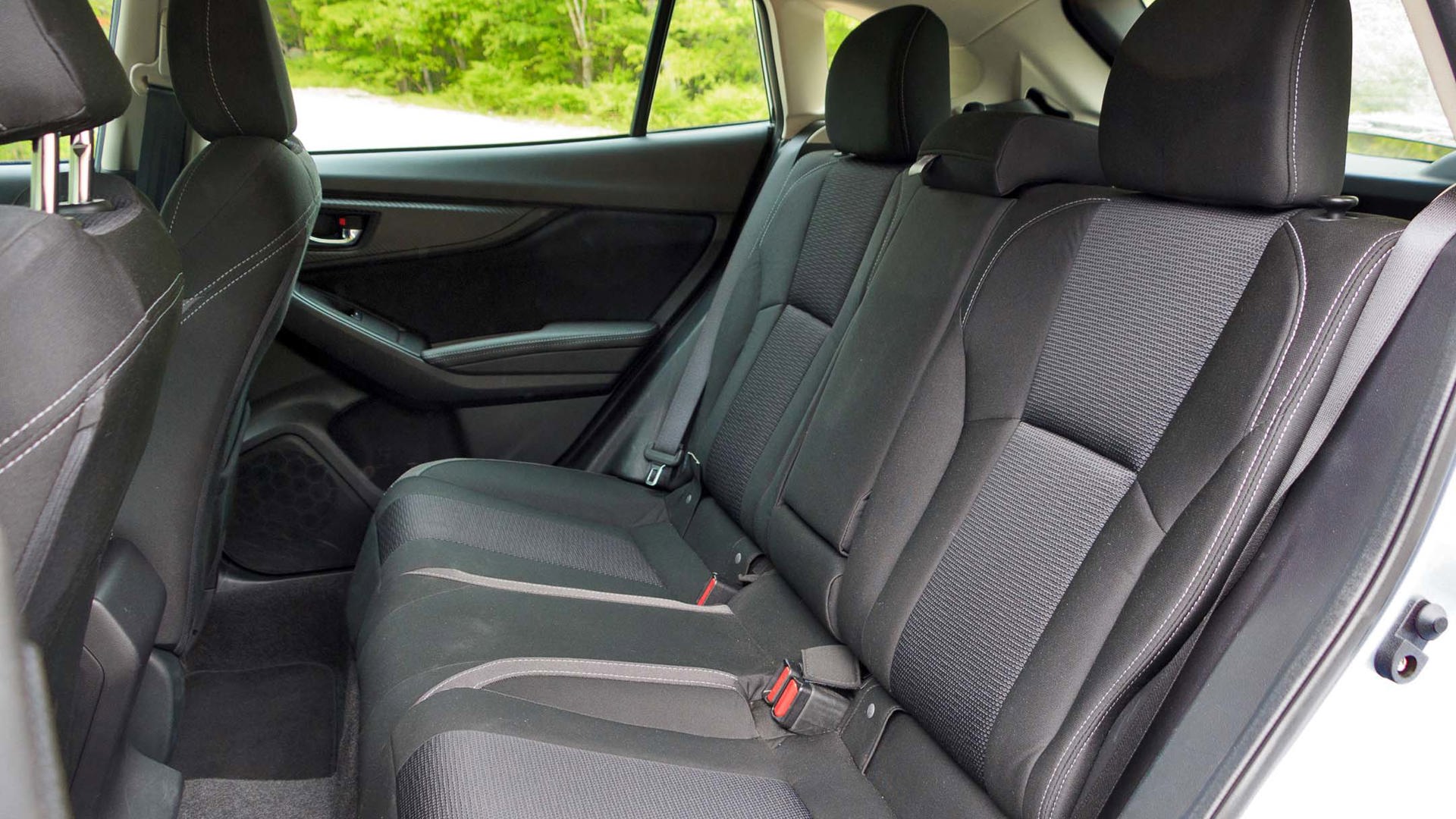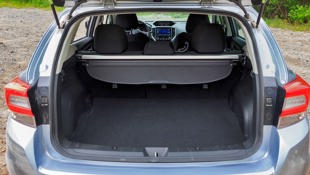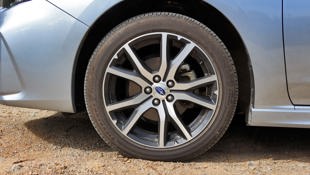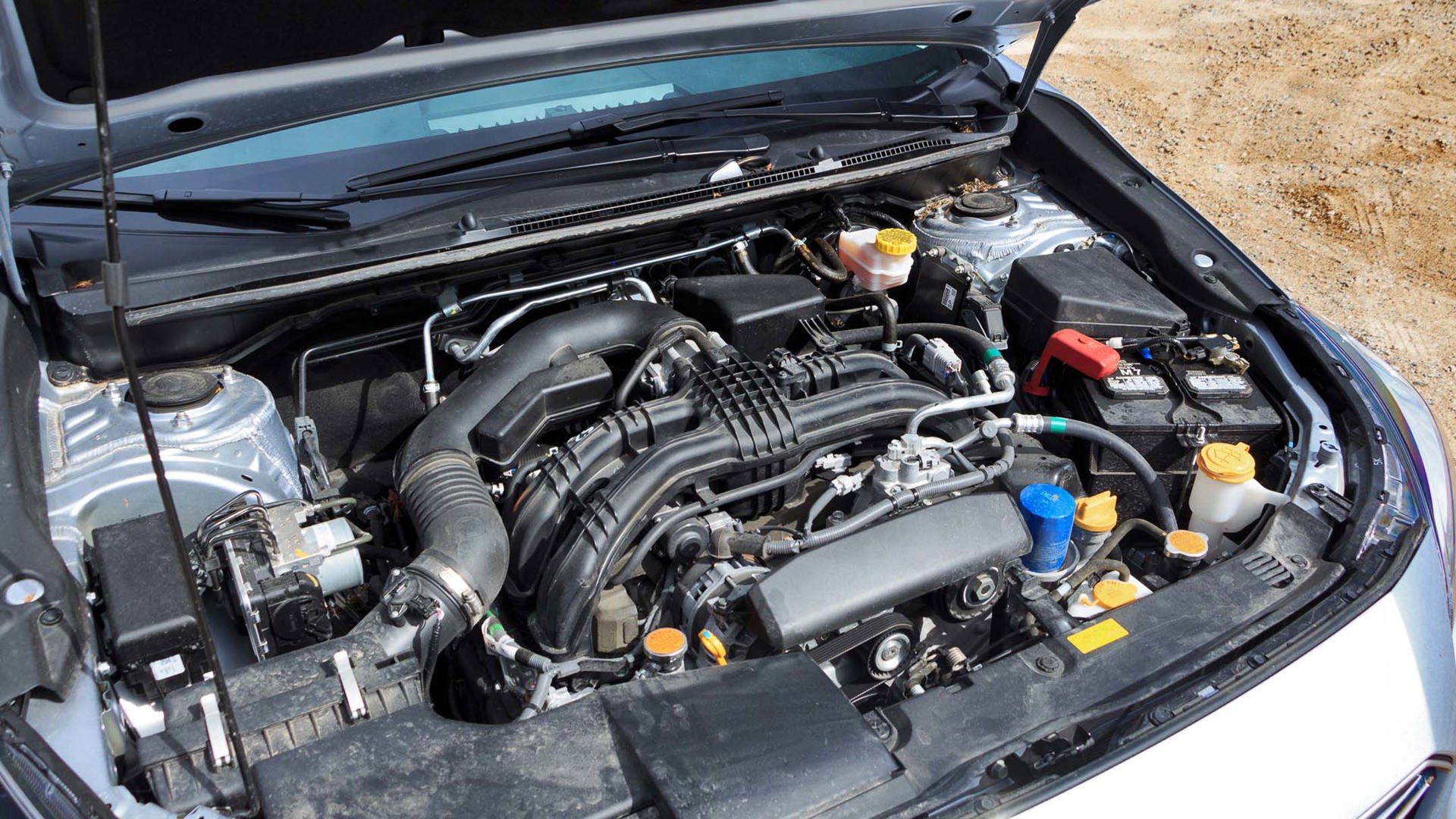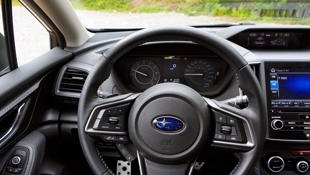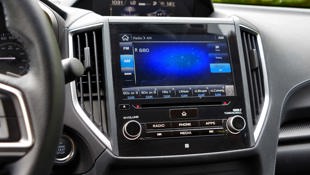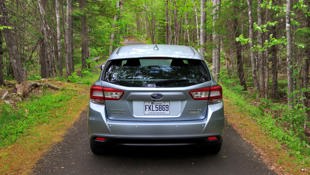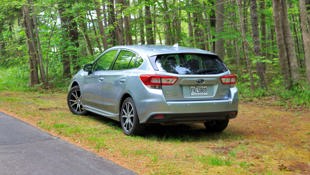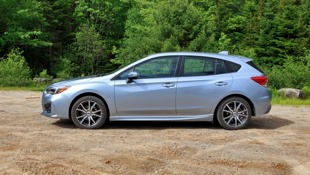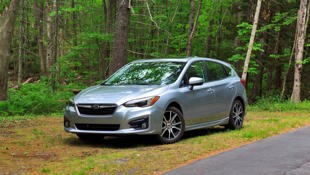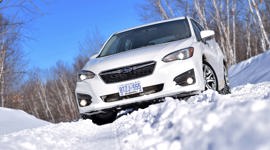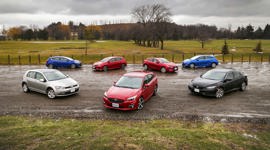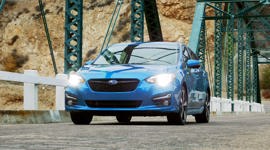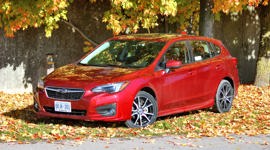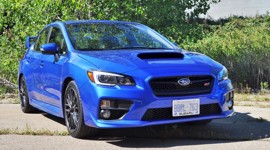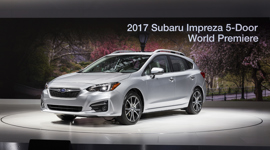 AutoTrader SCORE
AutoTrader SCORE
-
STYLING7/10
-
Safety7/10
-
PRACTICALITY8/10
-
USER-FRIENDLINESS8/10
-
FEATURES8/10
-
POWER8/10
-
COMFORT8/10
-
DRIVING FEEL7/10
-
FUEL ECONOMY7/10
-
VALUE7/10
Subaru built their reputation on rally cars. It started with the compact Leone, grew to the Legacy, and ended with the iconic blue-and-yellow Imprezas that tore up World Rally Championship stages across the globe. Look beneath those purpose-built WRC rocket ships and the lower levels of rallying were still full of Subarus. Some were WRX models, a few were STI-badged cars, but most of them were regular Imprezas. Strip out the interior, weld in a roll cage, and you’re good to go.
Whether it’s slow driving in traffic or aggressive corner-carving, this CVT never gets in your way.
Selling affordable cars with all-wheel drive certainly didn’t hurt; but making those cars tough and durable enough for dirt and snow stages – with enough suspension travel to make it back to Parc Fermé – were the big selling points. Sadly, Subaru stopped competing in the WRC in 2008.
The 2017 Subaru Impreza rides on an all-new platform. It’s the second generation of Impreza since the blue-and-yellow cars left the WRC, and it’s a quieter, more refined car, but it still has all-wheel drive and a flat-four engine. So does the all-new car still have that rally-inspired spirit, or will the Impreza end up stopped on stage?
This is an all-new car, built on a brand-new platform. Subaru says that the new platform is lighter, has a lower centre of gravity, and is 70 percent stiffer. It’s 38 mm wider and 40 mm longer, but 12 mm lower than the old one.
Subaru knows that most of their sales are hatchback models like my test car. When it comes to hatches, the space is important, but the opening is even more so. So they widened the hatch opening by about 100 mm. Total cargo volume for the hatch is 589 L with the rear seats up and 1,566 when they’re folded flat. It’s a massive space, and the big opening makes it very usable.
Up front, the extra width over last year’s is very noticeable. It’s not any wider outside than most other compacts, but inside it’s a different story. The Impreza is more than 30 mm wider than the Civic or the Cruze. No being squeezed in by the centre console, or having your knee get a little too cozy with the handbrake like most compact cars. Despite the lower roof height, there is more headroom and more glass than the competition. It feels roomier than most mid-size sedans, helped by the hatch’s flat roofline, which avoids the pinched feeling in the rear of the cabin that popular swooping rooflines suffer from.
Under the hood is a 2.0L boxer-four. This is a revised version of the last-generation car’s engine, so there aren’t any huge changes. Power is up by 4 to 152 hp. That’s not a big number in this class anymore, but while it won’t win any drag races, it doesn’t feel overly slow. Most of the time, the engine runs smoothly and quietly, without lugging or shrieking. Sadly, you can’t hear any of Subaru’s trademark flat-four warble. The engine does make itself known from a cold start though. Even at temperatures in the 20s, the engine is very noisy and has a surprising amount of vibration. It goes away in a minute or two, once it warms up.
The Impreza has two transmission choices: a five-speed manual and a continuously variable automatic. My hat is off to Subaru for making the first CVT I’ve ever driven that didn’t make me long for even an ancient four-speed auto. Most CVTs suffer from a rubber-band effect: the rpm slowly rise, and then the car starts to accelerate. They also drone, complain, and generally, feel disconnected from whatever is happening around them. Not this one. The revs climb as quickly as any conventional automatic, and acceleration is as instantaneous as it could be in an economy car. Whether it’s slow driving in traffic or aggressive corner-carving, this CVT never gets in your way. If you still want to pick your own gears, the paddle shifters let you choose from one of seven pre-set ratios. The only faults with this box are the occasional slight jerk when rolling from a stop, and a supercharger-like whine during long periods of full throttle.
My test car was the Sport trim, with the optional Technology package. Don’t confuse that with the Sport-Tech trim, which still has a Technology pack option. I guess that would make mine the Sport Tech and the top one the Sport-Tech Tech. Mine has an 8.0-inch touchscreen, upgraded from the 6.5-inch screen of lesser trims. Top trim adds navigation to the system. All get Subaru’s Starlink smartphone integration that includes Apple CarPlay and Android Auto. Above the infotainment screen is a second, short and wide 6.3-inch screen that gives info like fuel economy, additional engine information, and a vehicle dynamics screen that lets you know what the all-wheel drive system is up to.
The Technology package adds Subaru’s EyeSight active safety suite. It comes with pre-collision braking and throttle management, adaptive cruise control, lane-departure warnings, lane-sway warning (alerting you that you might be tired if you’re pinballing from line to line), automatic high-beams, lane-keeping assist, and automatic braking if you’re in reverse. The systems all work well. The adaptive cruise control doesn’t do a good job of letting you know when it’s going to slow down for the car in front, but that’s common to nearly every implementation out there. Switching to conventional cruise is a button-press away, once you read the manual to see which button it is (it’s the follow distance button, an odd choice). It also only allows a speed setting change in 5 km/h increments.
I drive mostly on narrow, winding roads with poor line-painting. That causes a lot of false alerts from lane-guidance systems. Most of them need to be turned off every time you start the car. Subaru’s will stay off once you turn it off, although there’s a full-bright orange light on the dash letting you know that it’s off.
So how does it drive? Subaru boasts that the new Impreza platform lowers the centre of gravity and reduces roll, without sacrificing ride comfort. That seems like a tall order, but they’re right. The Impreza has a very long travel and very soft suspension. That makes for a very smooth ride that soaks up bumps – on a big dip the car mimics a ’70s-era floatiness. But instead of floating up and down for what feels like an eternity, the Subaru floats up (or down) once, and then resettles. And even though there is lots of travel, the Impreza stays surprisingly flat in corners. It’s both amazingly soft, and shockingly flat.
So it’s comfortable on bumps and flat in the corners. Where does that pay off? When you hit the dirt. That suspension setup is great on the highway and broken backroads; but when you find yourself on a dirt road, the setup is nearly perfect. It soaks up all of the bumps, ruts, and dips; but stays flat when you throw it into a turn. Get back on the throttle, and the all-wheel-drive system helps to fire you out of the corner. Despite the new platform, and despite Subaru leaving the WRC, this car is still a rally racer at heart.
At the pumps, the Impreza is rated to get 8.4 L/100 km city, 6.5 highway. I averaged 7.6 in my driving, which was mostly rural highways. That number is a little higher than the average for the segment, but that’s the penalty that comes with all-wheel drive. For the extra traction on dirt and snow, that penalty may be well worth it.
The 2017 Subaru Impreza takes a full complement of tech features and gives you the choice of the more sedate sedan or the cavernous hatch. It rides and drives well, the infotainment system is easy to use, and the interior feels huge for the class. More importantly to Subaru fans, this is still a rally car at heart. It’s as happy being thrown around down a dirt road as it is being loaded up with all the cargo you care to haul. Now if you’ll excuse me, there’s a special stage calling my name.
| Engine Displacement | 2.0L |
|---|---|
| Engine Cylinders | 4 |
| Peak Horsepower | 152 hp @ 6,000 rpm |
| Peak Torque | 145 lb-ft @ 4,000 rpm |
| Fuel Economy | 8.4/6.5/7.5 L/100 km city/hwy/cmb |
| Cargo Space | 589 L/1,566 L seats down |
| Model Tested | 2017 Subaru Impreza 2.0i Sport 5-Door |
| Base Price | $25,295 |
| A/C Tax | $100 |
| Destination Fee | $1,595 |
| Price as Tested | $29,790 |
|
Optional Equipment
$2,800 – Technology Package $2,800
|
|
